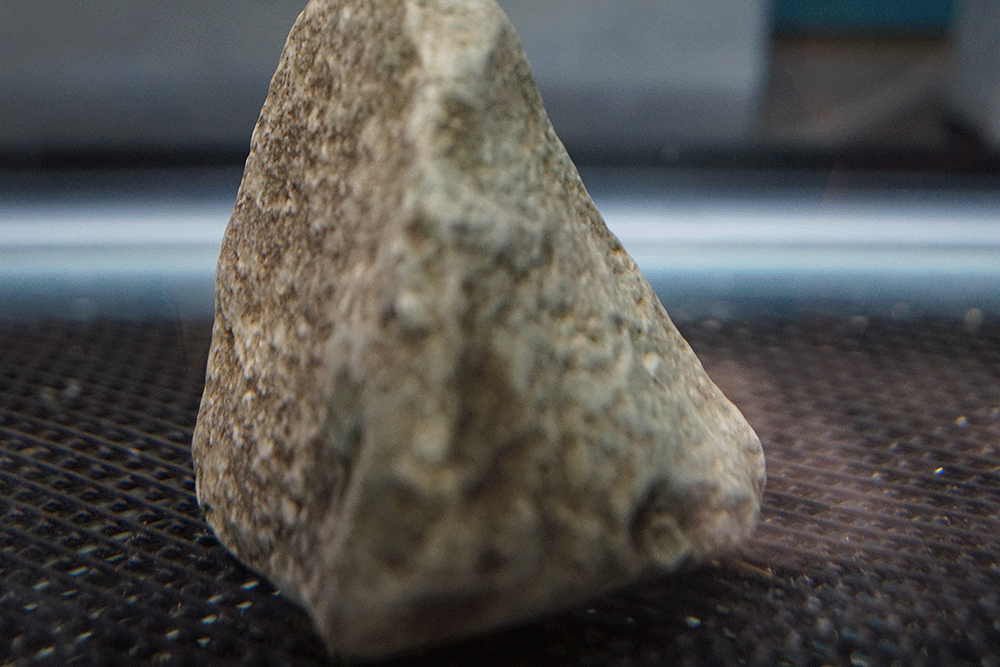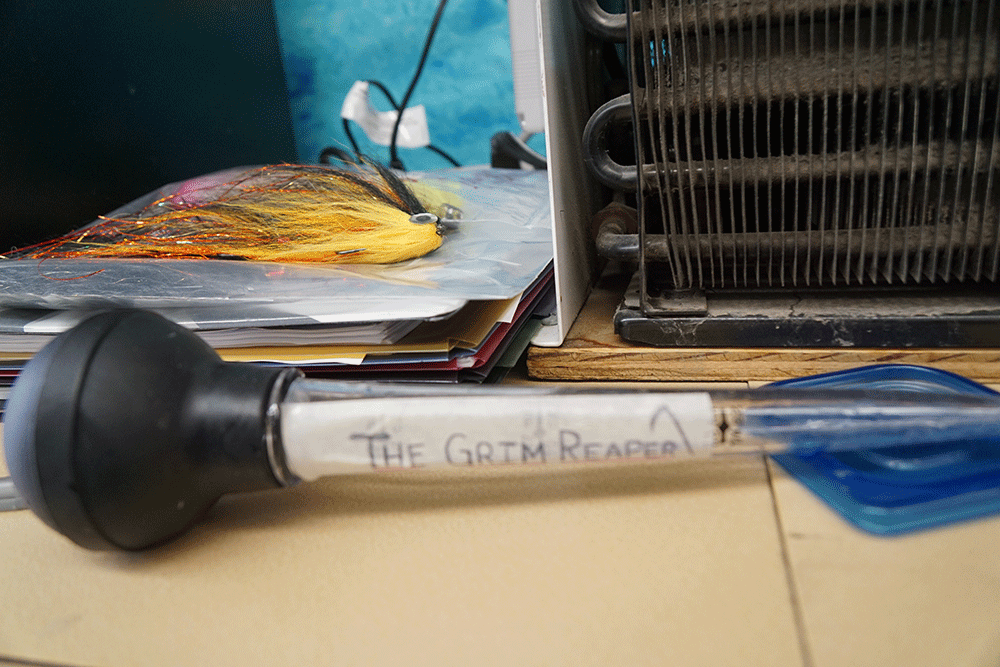Life is a beautiful thing. The trout in Michael Carrano’s class are hatched, growing, and just starting to shed the yolk sacs that come with the Alevin stage. Most are huddled in the hundreds close to large rocks on the bottom of the fish tank as they conserve energy and suck up the remaining nutrients before surfacing to feed within the next week or two. All signs still point to a healthy stock and a river release some time in May.

Trout huddle under a small rock inside the tank.
Life is a fragile thing. Despite their successes, this year’s trout have gone through quite the roller coaster ride. In February, their tank began to leak and an emergency evacuation was performed. Luckily, the Petco in Bennington was able to offer Mr. Carrano a discount on a new tank and the transfer of fish to the tank went smoothly. To be safe, Carrano also installed a filter on the new setup to help protect against spikes in ammonia levels. Since he was about to take paternity leave from the classroom to take care of a small fry of his own, Carrano was especially careful in setting it up so that Chris Alexopolous of the U.S. Forest Service, teachers, and his students could take care of the fish and regulate the tank while he was gone. Temperature control and proper airflow are critical in the development of young trout both in the classroom and in the wild. Getting through these harrowing situations served as a perfect lesson for the students in just how hard it is for the trout to survive, even in a controlled environment with no predators.

Thankfully, the Grim Reaper has only claimed a few victims so far this year.
Despite the setbacks, the class has only lost seven fish to date, the majority due to a deformity in which the organs grew outside of the body. The students will keep detailed records of the tank’s chemistry, and will incorporate the project into classroom learning about brook trout anatomy, the ecosystem, pollution (acid rain), and other fish native to Vermont.

